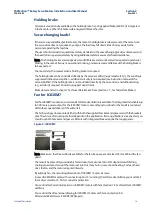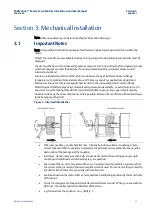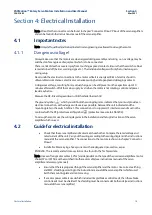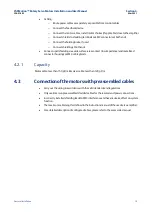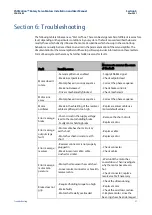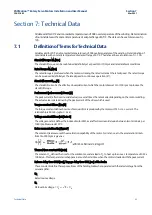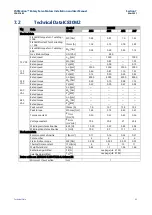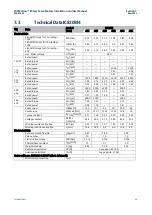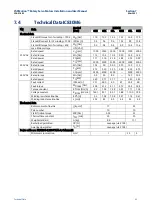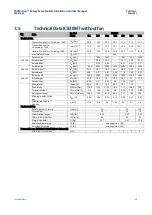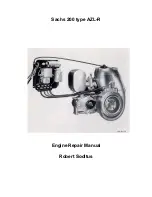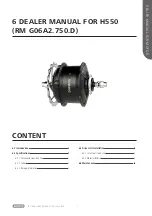
PACMotion™ Rotary Servo Motors Installation and User Manual
Section 5
GFK-3169C
Mar 2021
Setup
20
Section 5:
Setup
5.1
Important notes
Note: Only specialist personnel with extensive knowledge in the areas of electrical engineering / drive
technology are allowed to commission the drive unit of servo amplifier and motor.
5.2
Hot surface!
The surface temperature of the motor can exceed 100 ° C in operation. Danger of light burns!
•
Check (measure) the temperature of the motor.
•
Wait until the motor has cooled down below 40 °C before touching it.
5.3
High voltages!
Deadly voltages can occur, up to 900 V. Risk of electric shock! Check that all live connection points are
safe against accidental contact.
Never undo the electrical connections to the motor when it is live. Risk of electric shock! The residual
charge in the capacitors of the drive can produce dangerous voltages up to 10 minutes after the mains
supply has been switched off.
Even when the motor is not rotating, control and power leads may be live.
•
Measure the DC-link voltage and wait until it has fallen below 60 V.
5.3.1
Secure unplanned movements!
The drive performing unplanned movements during commissioning cannot be ruled out.
•
Make sure that, even if the drive starts to move unintentionally, no danger can result for
personnel or machinery.
•
The measures you must take in this regard for your task are based on the risk assessment of the
application.
5.3.2
Guide for setup
The procedure for setup is described as an example. A different method may be appropriate or necessary,
depending on the application of the equipment.
1.
Check the assembly and orientation of the motor.
2.
Check the drive components (clutch, gear unit, belt pulley) for the correct seating and setting
(observe the permissible radial and axial forces).
3.
Check the wiring and connections to the motor and the servo amplifier. Check that the earthing
is correct.
4.
Test the function of the holding brake, if used. (apply 24 V, brake must be released).
5.
Check whether the rotor of the motor revolves freely (release the brake, if necessary). Listen for
grinding noises.
6.
Check that all the required measures against accidental contact with live and moving parts have
been carried out.
7.
Carry out any further tests which are specifically required for your system.
8.
Now commission the drive according to the setup instructions for the servo amplifier.
9.
In multi-axis systems, individually commission each drive unit (amplifier and motor).











